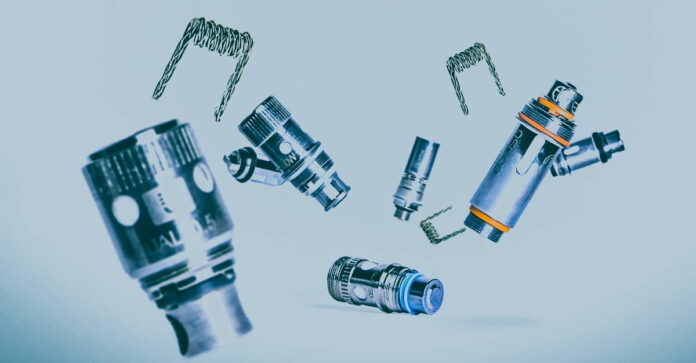Vaping has emerged as a popular alternative to traditional smoking, offering a customisable and flavorful experience for enthusiasts. At the core of this experience lies a crucial component – the vape coil. This seemingly simple piece of technology plays a pivotal role in transforming e-liquid into the aromatic clouds that define the vaping experience. This article will delve into the intricate world of vape coils and explore how they shape your e-liquid into pure bliss.
Understanding Vape Coils
Vape coils serve as the heating elements responsible for converting e-liquid into vapour. Generally made up of materials like stainless steel, kanthal or nickel, they come in various shapes and configurations, each designed to deliver a specific vaping experience. The key to their functionality lies in reaching a temperature sufficient to vaporise the e-liquid without causing combustion.
Coil Resistance: Striking the Right Balance
The resistance of a vape coil is a critical factor influencing the overall vaping experience. Measured in ohms, coil resistance determines the amount of power required to heat the coil. Low-resistance heating elements, often referred to as sub-ohm coils, demand more power and produce warmer vapour with increased cloud production. On the other hand, high-resistance ones require less power and generate cooler vapour. Vapers can choose heating elements based on their preferences, striking a balance between cloud production and flavour intensity.
Wire Types: The Versatility Beyond Coils
The performance of vape heating elements is greatly influenced by the material used in them. An iron-chromium-aluminum alloy called kanthal is a popular option because of its oxidation resistance and longevity. Because of its adaptability, stainless steel can be employed in temperature control as well as wattage control modes. Nickel and titanium are preferred for temperature control vaping, offering precise control over the coil’s temperature. Each material brings unique characteristics to the table, influencing flavour, longevity, and the overall vaping experience.
Coil Configurations: A Choice Between Single and Dual Coils
Vape heating units come in various configurations, with single and dual coils being the most common. Single ones are simpler and often preferred by those prioritising flavour over cloud production. They require less power and are generally easier on the battery. On the other hand, dual ones, as the name suggests, consist of two heating units that work simultaneously. This configuration tends to produce more vapour, catering to cloud chasers who seek a more robust and visually appealing vaping experience. The choice between single and dual depends on individual preferences and the desired balance between flavour and vapour production.
Wicking Material: Guiding the E-Liquid Flow
In addition to the coil itself, the wicking material plays a crucial role in shaping the vaping experience. Cotton is the most common wicking material due to its ability to absorb e-liquid efficiently. However, advancements in vaping technology have introduced alternative materials like ceramic and mesh, each offering distinct advantages. Proper wicking ensures a consistent flow of e-liquid to the coil, preventing dry hits and enhancing the overall flavour profile of the vape.
Read Also: Flavourful Clouds: A Deep Dive into Vape Juice Options
In conclusion, as the heart of the vaping experience, vape coils profoundly impact vapers’ flavour, vapour production, and overall satisfaction. The careful selection of coil resistance, wire type, configuration, and wicking material allows users to tailor their vaping experience to meet their unique preferences. Whether you are a flavour enthusiast or a cloud chaser, understanding the role of vape coils empowers you to unlock the full potential of your e-liquid, transforming it into pure bliss with every inhalation. As technology advances, the vaping world is sure to witness further innovations in coil design, ushering in new possibilities for enthusiasts seeking the perfect balance between flavour and vapour.







































